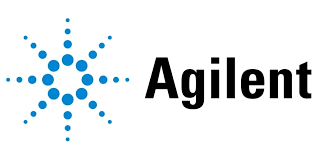Ai In Food Manufacturing
Published Date: 15 December 2025 | Report Code: ai-in-food-manufacturing
Ai In Food Manufacturing Market Size, Share, Industry Trends and Forecast to 2033
This report provides a comprehensive analysis of the Ai In Food Manufacturing market, covering diverse insights ranging from market size and CAGR to segmentation, regional performance, technology innovations, and product trends. It offers detailed data and forecasts for the period 2024 to 2033, enabling industry stakeholders to understand growth drivers and emerging challenges in this dynamic sector.
| Metric | Value |
|---|---|
| Study Period | 2024 - 2033 |
| 2024 Market Size | $4.50 Billion |
| CAGR (2024-2033) | 6.2% |
| 2033 Market Size | $7.84 Billion |
| Top Companies | TechFood Innovations, FoodAI Solutions, AgriDigital Systems |
| Last Modified Date | 15 December 2025 |
Ai In Food Manufacturing (2024 - 2033)
Ai In Food Manufacturing Market Overview
Customize Ai In Food Manufacturing market research report
- ✔ Get in-depth analysis of Ai In Food Manufacturing market size, growth, and forecasts.
- ✔ Understand Ai In Food Manufacturing's regional dynamics and industry-specific trends.
- ✔ Identify potential applications, end-user demand, and growth segments in Ai In Food Manufacturing
What is the Market Size & CAGR of Ai In Food Manufacturing market in 2024?
Ai In Food Manufacturing Industry Analysis
Ai In Food Manufacturing Market Segmentation and Scope
Tell us your focus area and get a customized research report.
Ai In Food Manufacturing Market Analysis Report by Region
Europe Ai In Food Manufacturing:
Europe has established itself as a leader in adopting advanced AI technologies within the food manufacturing sector. With an initial market size of 1.49 units in 2024 witnessing a projected rise to 2.59 units by 2033, the region benefits from stringent regulatory policies and a focus on sustainability. European manufacturers are aggressively investing in digital transformation to maintain competitiveness, ensuring high standards of quality and process automation. Initiatives for traceability and data-driven decision-making further augment growth in this market.Asia Pacific Ai In Food Manufacturing:
The Asia Pacific region is experiencing dynamic growth in the Ai In Food Manufacturing market, with the market size expanding from 0.85 units in 2024 to an anticipated 1.49 units by 2033. This growth is propelled by increasing investments in automation, rising demand for packaged and processed foods, and government incentives promoting digital transformation. Local manufacturers are rapidly adopting AI technologies to enhance productivity and mitigate labor shortages. The region’s focus on sustainable practices and reduced waste further emphasizes the role of AI in driving efficiency.North America Ai In Food Manufacturing:
North America remains a significant market for Ai In Food Manufacturing, with market size estimates rising from 1.48 units in 2024 to 2.58 units by 2033. The region is characterized by strong industrial infrastructure, high consumer demand for quality and safety, and robust investment in research and development. Technology giants and traditional food manufacturers are collaborating to integrate AI systems, resulting in improved supply chain management, enhanced food safety protocols, and more efficient production practices.South America Ai In Food Manufacturing:
In South America, the market is marked by emerging interest in digital transformation, particularly in countries with growing export industries. Although starting at a relatively modest market size of 0.37 units in 2024, projections suggest an increase to 0.65 units by 2033. Rapid urbanization, the expansion of the retail food sector, and investments in smart agricultural practices are key drivers for this steady growth. Innovative start-ups in the region are also contributing to the evolution of AI applications in food production.Middle East & Africa Ai In Food Manufacturing:
The Middle East and Africa region, although currently representing a smaller market segment with a size of 0.30 units in 2024, is projected to grow to 0.53 units by 2033. Factors such as rapid urbanization, increasing demand for processed foods, and investments in AI technologies are stimulating modest yet steady growth. Governments in these regions are also supporting digital initiatives, which in turn are encouraging food manufacturers to adopt innovative AI solutions to improve productivity and operational efficiency.Tell us your focus area and get a customized research report.
Ai In Food Manufacturing Market Analysis By Application
Global AI in Food Manufacturing, By Application Market Analysis (2024 - 2033)
The by-application segment covers diverse fields such as food manufacturers, restaurants, food distributors, and research institutes. In 2024, food manufacturers led the segment with a market size of 2.31 units and a share of 51.38%, reflecting their reliance on AI to optimize production processes and ensure product consistency. Restaurants, with a market size of 1.07 units and a 23.74% share, are leveraging AI for customer service enhancements and inventory management. Food distributors and research institutes, while representing smaller market sizes of 0.48 and 0.64 units respectively, maintain steady shares of 10.59% and 14.29%. These segments are expected to evolve with AI technologies enabling refined decision-making tools and enhanced supply chain management, thereby driving growth and operational efficiency across the food manufacturing landscape.
Ai In Food Manufacturing Market Analysis By Technology
Global AI in Food Manufacturing, By Technology Market Analysis (2024 - 2033)
The by-technology segment highlights the pivotal role of modern AI innovations such as machine learning, computer vision, natural language processing, and IoT integration. In 2024, machine learning boasts a market size of 2.31 units with a dominant share of 51.38%, underscoring its centrality in process optimization and predictive analytics. Computer vision and natural language processing each contribute significantly with market sizes of 1.07 and 0.48 units, and shares of 23.74% and 10.59% respectively, facilitating enhanced quality control and automated compliance monitoring. IoT integration, with a market size of 0.64 units and a share of 14.29%, is critical for real-time operations and process synchronization. These technologies continue to advance, driving efficiency, reducing costs, and improving safety measures within the food manufacturing processes.
Ai In Food Manufacturing Market Analysis By Food Type
Global AI in Food Manufacturing, By Food Type Market Analysis (2024 - 2033)
The by-food-type segment dissects the market into key product categories: processed foods, dairy products, meat products, and beverages. Processed foods lead the segment with a market size of 2.31 units and a corresponding share of 51.38%, supported by a strong demand for packaged and ready-to-eat products. Dairy products follow with a market size of 1.07 units and a 23.74% share, as innovations in AI enhance quality control and product consistency. Meat products and beverages, with market sizes of 0.48 and 0.64 units and shares of 10.59% and 14.29% respectively, are experiencing steady improvements driven by automated production technologies and increased consumer focus on food safety. The integration of AI across these food types promises to streamline production and boost market competitiveness in the coming decade.
Ai In Food Manufacturing Market Analysis By End User
Global AI in Food Manufacturing, By End-User Market Analysis (2024 - 2033)
The by-end-user segment focuses on the way AI technologies are utilized by critical operational functions such as quality control, supply chain optimization, product development, predictive maintenance, and process automation. Quality control stands out with a market size of 1.85 units and a substantial share of 41.11%, vital for maintaining stringent safety standards. Supply chain optimization, product development, predictive maintenance, and process automation demonstrate market sizes of 0.91, 0.59, 0.49, and 0.66 units with respective shares of 20.18%, 13.16%, 10.83%, and 14.72%. The adoption of AI in these areas is leading to improved operational efficiency, decreased production downtime, and enhanced overall product quality, which are crucial to sustaining competitive advantage in the food manufacturing industry.
Ai In Food Manufacturing Market Trends and Future Forecast
Tell us your focus area and get a customized research report.
Global Market Leaders and Top Companies in Ai In Food Manufacturing Industry
TechFood Innovations:
TechFood Innovations is at the forefront of integrating AI with traditional food processing techniques. The company leverages advanced machine learning and IoT solutions to optimize production, enhance quality control, and drive sustainability across operations.FoodAI Solutions:
FoodAI Solutions specializes in developing customized AI applications specifically for food manufacturers. Their state-of-the-art systems for predictive maintenance, process automation, and supply chain optimization enable clients to significantly increase operational efficiency.AgriDigital Systems:
AgriDigital Systems focuses on delivering end-to-end AI solutions that transform both the processing and distribution aspects of the food industry. Through innovative research and strategic partnerships, the company continues to pioneer advancements in food safety and efficiency.We're grateful to work with incredible clients.









FAQs
What is the market size of ai In Food Manufacturing?
The AI in Food Manufacturing market is valued at $4.5 billion in 2024, with a projected CAGR of 6.2% over the next decade. This reflects the increasing adoption of AI technologies in various food production processes.
What are the key market players or companies in this ai In Food Manufacturing industry?
Key players in the AI in Food Manufacturing market include giants like IBM, Siemens, and Nestlé. These companies lead in integrating AI technologies to enhance production efficiency and ensure food safety in manufacturing operations.
What are the primary factors driving the growth in the ai In Food Manufacturing industry?
Growth drivers include rising demand for automation, the need for improved food safety, and efficiency improvements. Additionally, increasing regulatory standards compel manufacturers to adopt AI solutions for compliance and quality assurance.
Which region is the fastest Growing in the ai In Food Manufacturing?
The fastest-growing region for the AI in Food Manufacturing market is projected to be North America, where the market size is expected to rise from $1.48 billion in 2024 to $2.58 billion by 2033, indicating robust implementation of AI technologies.
Does ConsaInsights provide customized market report data for the ai In Food Manufacturing industry?
Yes, ConsaInsights offers customized market report data tailored to specific needs in the AI in Food Manufacturing sector, enabling stakeholders to make informed decisions based on unique insights and analyses.
What deliverables can I expect from this ai In Food Manufacturing market research project?
Deliverables include comprehensive market analysis reports, insights into competitive landscapes, forecasts for market trends, and segment-specific data on adoption rates and projections for various applications within the industry.
What are the market trends of ai In Food Manufacturing?
Current trends show a significant focus on machine learning and IoT integration, enhancing operational efficiency. Additionally, there's an increasing emphasis on quality control solutions and sustainable practices to meet consumer demand and regulatory requirements.
